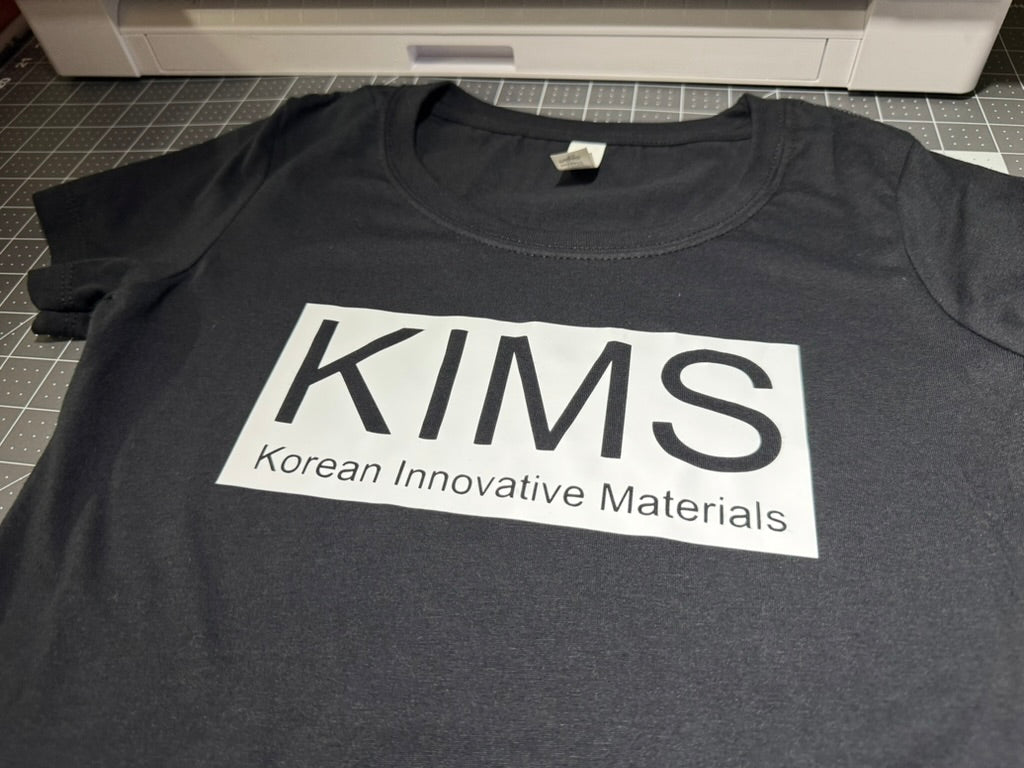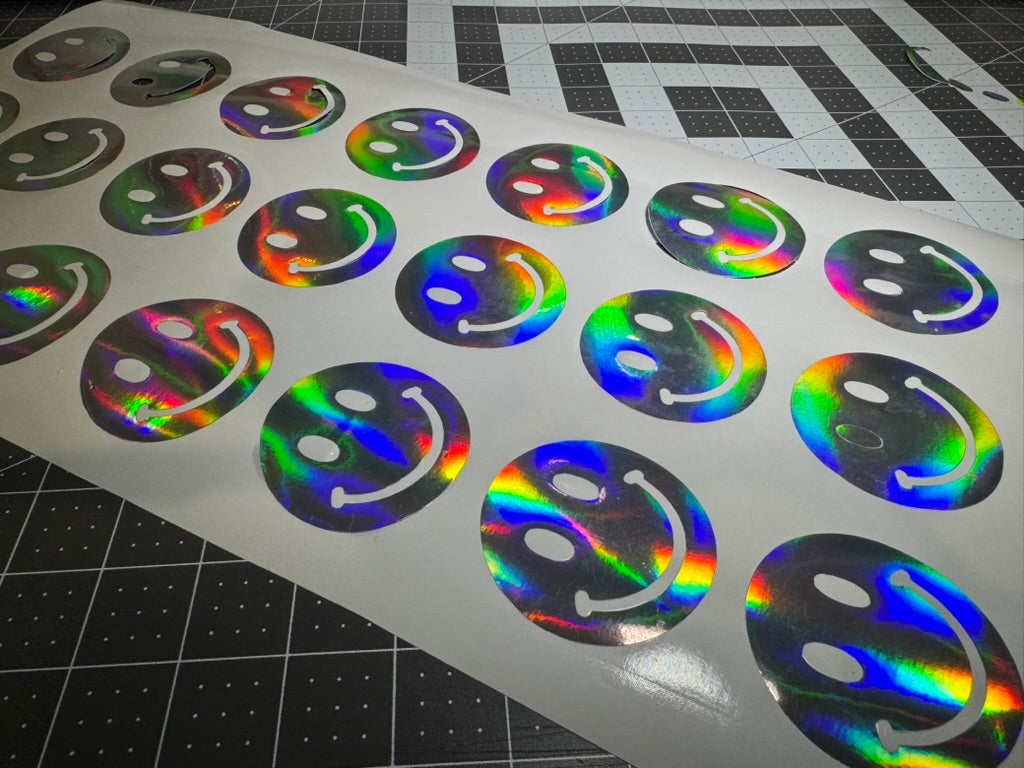Custom vinyl designs are everywhere—from t-shirts and tote bags to decals and banners. They're used by small business owners, hobbyists, and creative professionals who want sharp, long-lasting results. But vinyl isn't just about the design itself—it's also about how well that design holds up over time.
Maintaining the quality of vinyl projects involves more than cleaning. It starts with understanding the different types of vinyl and how each one behaves. Some are built for heat, others for weather, and some are simply decorative. Each type responds differently to pressure, temperature, and wear.
Knowing the differences between vinyl types allows for better storage, handling, and care decisions. This article covers the essential maintenance tips that help your custom vinyl projects stay vibrant and professional-looking.
Understanding Different Vinyl Types
Vinyl used in custom projects comes in several forms. The most common types include heat transfer vinyl (HTV), adhesive vinyl, and printable vinyl. Each has different uses and maintenance needs.
Heat transfer vinyl applies to fabric using heat and pressure. It has a heat-activated adhesive backing that bonds with the fabric fibers. Adhesive vinyl sticks to surfaces like glass, plastic, or metal without heat. Printable vinyl allows for printing custom images before applying it like a sticker.
The manufacturing process also affects how vinyl performs:
-
Calendered vinyl: Made by rolling and stretching the material into sheets. It's thicker and less flexible, better for flat surfaces and short-term use.
-
Cast vinyl: Created by pouring liquid vinyl into molds. It's more flexible and durable, ideal for curved surfaces or outdoor applications.
Material quality directly affects longevity. Higher-quality vinyl resists fading, cracking, and peeling when properly maintained. Premium vinyl can better handle washing, sunlight, and environmental exposure.
Proper Handling And Inspection
When you first receive vinyl materials, proper handling sets the stage for project success. Start by checking for any shipping damage like creases, tears, or dents that might affect application.
Look at the vinyl surface for consistent texture and color. The adhesive backing should be intact and free from contamination. A simple light test helps spot imperfections—hold the vinyl at an angle under bright light to see any bubbles or scratches.
Always handle vinyl with clean hands or lint-free gloves. Oils from skin can transfer to the vinyl and affect adhesion. When unrolling vinyl, do it slowly without stretching the material, and place it on a clean, flat surface.
For heat transfer vinyl projects, pre-testing a small piece helps confirm temperature settings before committing to the full design. This prevents overheating, which can damage both the vinyl and the base material.
Cleaning Vinyl Projects Effectively
Regular cleaning keeps vinyl looking fresh and extends its lifespan. The key is using gentle methods that don't damage the surface or weaken adhesives.
For basic cleaning, mix one part mild soap with ten parts water. This solution removes dirt without harming the vinyl. Apply it with a microfiber cloth using light pressure in straight lines.
Avoid these cleaning products that can damage vinyl:
-
Bleach
-
Ammonia
-
Alcohol-based cleaners
-
Abrasive powders
-
Solvent-based cleaners
After cleaning, rinse with clean water to remove soap residue. Pat dry with a soft cloth rather than rubbing, which can cause scratches. For outdoor vinyl projects, cleaning every few weeks prevents dirt buildup that can be harder to remove later.
Different vinyl applications may need specific cleaning approaches:
-
Heat transfer vinyl on clothing: Turn garments inside-out when washing, use cold water, and avoid fabric softeners.
-
Vehicle decals: Hand wash rather than using automatic car washes that might catch edges.
-
Wall decals: Dust regularly with a microfiber cloth before dirt can accumulate.
Smart Storage Solutions
How you store vinyl—both unused materials and completed projects—significantly affects quality over time. Temperature and humidity control is essential for preventing damage.
The ideal storage environment for vinyl is between 65-75°F (18-24°C) with 40-60% humidity. Extreme temperatures can cause vinyl to warp or become brittle, while high humidity weakens adhesives and may lead to mold growth.
Store unused vinyl sheets flat to prevent curling. For larger rolls, maintain a minimum roll diameter of 2 inches to avoid creases, and position the adhesive side facing outward. Always keep vinyl away from direct sunlight, which can cause fading and degradation of the adhesive.
For completed vinyl projects, consider these storage tips:
-
Store t-shirts with heat transfer designs folded with the design facing inward
-
Keep vinyl banners rolled rather than folded to prevent crease lines
-
Use acid-free tissue between layers of vinyl decals to prevent sticking
If you notice vinyl starting to curl, placing it under a flat, heavy object for a few hours can help restore its shape before application.
Weather Protection Strategies
Outdoor vinyl applications face unique challenges from rain, wind, sun, and temperature changes. Understanding these effects helps you take protective measures.
Water exposure can weaken adhesives and cause vinyl to lift from surfaces. For outdoor projects, consider applying a clear sealant to the edges where moisture is most likely to penetrate. After rainstorms, check for water spots or lifting edges and dry thoroughly.
Wind carries abrasive particles that can scratch and dull vinyl surfaces. In high-wind areas, position vinyl projects in sheltered locations when possible or use protective covers during extreme weather.
Sun damage is perhaps the biggest threat to outdoor vinyl. UV rays break down the material and fade colors over time. UV-protective coatings extend the life of outdoor vinyl significantly. These should be reapplied every 6-12 months, depending on sun exposure.
Temperature fluctuations cause vinyl to expand and contract, which can stress adhesives. When applying vinyl outdoors, aim for moderate temperatures (60-80°F) for the best initial adhesion.
Quick Fixes For Common Issues
Even well-maintained vinyl projects sometimes develop problems. Knowing how to address these issues quickly prevents them from worsening.
For peeling edges on vinyl decals or graphics:
-
Clean the area with mild soap and water
-
Allow to dry completely
-
Apply a small amount of vinyl-safe adhesive
-
Press down firmly and hold until secure
Air bubbles under vinyl can be fixed with a simple heat and pressure technique. Use a hair dryer on low setting to gently warm the bubbled area, then press out the air with a soft squeegee, working from the center outward.
Surface scratches on vinyl can often be buffed out with a vinyl-specific polish. For deeper scratches, a matching vinyl patch may be necessary. Cut a piece slightly larger than the damaged area, apply it over the scratch, and smooth out with a squeegee.
If colors begin fading on outdoor vinyl, a UV protectant spray can slow further degradation. However, severe fading usually indicates it's time to replace the vinyl.
Special Care For Premium Finishes
Specialty vinyl types like metallic, glitter, or holographic finishes require extra attention to maintain their unique visual effects.
Metallic and glitter vinyl surfaces have textured components that can trap dirt more easily than smooth vinyl. Clean these gently with a soft cloth and avoid rubbing, which can dull the sparkle. Non-abrasive cleaners formulated for textured surfaces work best.
Holographic and color-shifting vinyl finishes are sensitive to scratching. Even minor surface damage can disrupt the special visual effect. Handle these materials with extra care and clean only when necessary using the gentlest methods.
Self-healing vinyl contains polymers that can repair minor scratches when exposed to gentle heat. If you notice small scratches on this type of vinyl, sometimes just leaving it in warm sunlight for a short time allows the surface to smooth itself out.
For all specialty finishes, test any cleaning product on a small, inconspicuous area first to ensure it doesn't damage the special effect.
Maintaining Long-Term Quality
Consistent care routines help vinyl projects maintain their appearance and function over time. Regular inspection catches small issues before they become major problems.
For heat transfer vinyl on garments, washing inside-out in cold water and air-drying extends the life of the design. Avoid ironing directly on vinyl graphics—instead, iron the reverse side if needed.
Outdoor vinyl projects benefit from seasonal deep cleaning. Spring and fall are good times to remove accumulated grime and apply fresh protective coatings before extreme summer heat or winter cold.
Keep a maintenance log for commercial vinyl projects. Track cleaning dates, condition notes, and any repairs made. This helps identify patterns of wear and optimize the care schedule.
Quality vinyl materials from reputable suppliers generally perform better over time. While they may cost more initially, the extended lifespan and reduced maintenance needs often make them more economical in the long run.
By following these maintenance tips, your custom vinyl projects can remain vibrant and professional-looking for years to come, whether they're business signage, personalized gifts, or creative home décor.
FAQs About Maintaining Vinyl Quality
How often should I clean my vinyl projects?
Clean indoor vinyl projects monthly and outdoor vinyl every 2-4 weeks, adjusting the frequency based on environmental conditions and visible dirt accumulation.
What is the best way to remove stubborn stains from vinyl without damaging it?
Apply a mild soap solution with a soft cloth using gentle pressure in a straight motion, avoiding circular scrubbing that could damage the vinyl surface.
Can I use alcohol-based cleaners on heat transfer vinyl projects?
Alcohol-based cleaners can damage heat transfer vinyl by breaking down adhesives and causing color fading, so mild soap and water solutions are safer alternatives.
How do I prevent color fading in outdoor vinyl applications?
Apply a UV-protective coating to outdoor vinyl and position projects away from direct sunlight when possible to minimize UV exposure and color fading.
What temperature range is safe for storing unused vinyl materials?
Store vinyl materials between 65-75°F (18-24°C) in a dry environment with 40-60% humidity to prevent warping, brittleness, and adhesive failure.
How can I tell if my vinyl project needs resealing or protective coating?
Look for signs like dull appearance, rough texture, lifting edges, or visible color fading, which indicate it's time to apply a fresh protective coating.
Are there special considerations for maintaining vinyl in high-humidity environments?
In high-humidity areas, use dehumidifiers or climate control, clean vinyl more frequently to prevent mold growth, and check adhesion points regularly for moisture-related weakening.







